Stephanie A. Mann's Blog, page 279
March 22, 2013
Music For Holy Week
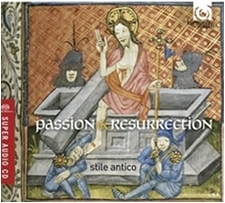 Stile Antico has another new CD, which I'll be listening to starting tomorrow, called Passion & Resurrection:
Stile Antico has another new CD, which I'll be listening to starting tomorrow, called Passion & Resurrection:Stile Antico's seventh recording focuses on the dramatic events of Holy Week, retracing in music the journey from Palm Sunday to Easter Sunday. Twelve different composers are represented in an enthralling programme encompassing the English, Flemish and Spanish Renaissance. At the heart of the disc are twin settings of the mediaeval carol Woefully Arrayed: one by William Cornysh (1465-1523), and one commissioned in 2009 especially for Stile Antico by British composer John McCabe (b. 1939) and recorded here for the first time.
The CD contains performances of:
Cornysh: Woefully ArrayedGibbons: Hosanna to the Son of DavidTallis: O sacrum conviviumLassus: In monte OlivetiMorales: O crux, aveVictoria: O vos omnesJohn McCabe: Woefully ArrayedTaverner: Dum transissetGuerrero: Maria MagdaleneByrd: In resurrectione tuaLheritier: Surrexit pastor bonusGibbons: I am the ResurrectionCrecquillon: Congratulamini mihiThe CD folder and booklet are beautifully illustrated, with pictures of the Risen Christ, Christ the Man of Sorrows, and border details from fifteenth century English Books of Hours.
First Things featured William Cornysh's "Woefully Arrayed" yesterday:
Woefully arrayed
My blood, man for thee ran, it may not be nayed;
My body, blo and wan;
Woefully arrayed.
Behold me, I pray thee
with all thy whole reason
and be not hard-hearted,
and for this encheason,
sith I for thy soul sake
was slain in good season,
Beguiled and betrayed
by Judas’ false treason,
unkindly entreated,
with sharp cord sore freted,
the Jews me threated,
they mowed, they grinned,
they scorned me,
condem’d to death as thou may’st see;
Woefully arrayed.
Thus naked am I nailed.
O man, for thy sake;
I love thee, then love me,
why sleepst thou, awake,
remember my tender heartroot for thee brake;
with pains my veins constrained to crake;
thus tugged to and fro,
thus wrapped all in woe,
whereas never man was so entreated,
thus in most cruel wise
was like a lamb offer’d in sacrifice;
Woefully arrayed.
Of sharp thom I have worn
a crown on my head.
So pained, so strained, so rueful, so red,
thus bobbed, thus robbed,
thus for thy love dead;
unfeigned, not deigned,
my blood for to shed,
my feet and handes sore
the sturdy nailes bore;
what might I suffer more,
than I have done, O man, for thee?
Come when thou list, welcome to me!
Woefully arrayed.
John McCabe comments on his version of "Woefully Arrayed" here:
Woefully arrayed is a supreme choral setting by William Cornysh, Junior, who died in 1523, of a text usually regarded as of anonymous composition, though there have been some attributions to John Skelton. It is a thoughtful, powerful meditation on Christ on the Cross, and though Cornysh's setting has remarkable intensity and contrapuntal artistry, I felt a strong wish to add my own response to this fine text. The different versions of it have different verses - that used by Cornysh has three verses (plus the refrain), while there are others with four or even five (one attributted to Skelton has five). I have chosen to restrict myself to the three used by Cornysh, using my own adaptation of the modernised words which yet incorporates some archaisms - a deliberate choice for reasons of rhythm and verbal sound.
Published on March 22, 2013 22:30
March 20, 2013
A Chestertonian Pope Francis?
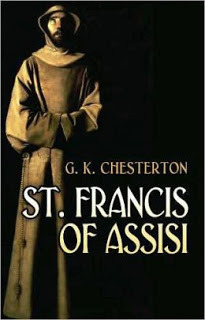 William Oddie offers us another reading option to start connecting with Pope Francis, named in honor of St. Francis of Assisi: Chesterton's biography of that great saint. In The Catholic Herald, Oddie writes:
William Oddie offers us another reading option to start connecting with Pope Francis, named in honor of St. Francis of Assisi: Chesterton's biography of that great saint. In The Catholic Herald, Oddie writes:I had been told that Pope Francis was an admirer of Chesterton and was googling around trying to see if there was anything out there that might confirm it. I suddenly realised that it was I myself who over 15 years ago had written that Sunday Telegraph article. Suddenly I wondered: who was the archbishop who had signed the letter? Not a certain Archbishop Bergoglio, by any chance? If so, my own ambition that procedures towards Chesterton’s canonisation should indeed be initiated had just taken a major step towards being realised. But no: Pope Francis became archbishop only in 1998. But he was in 1995 a close colleague of his predecessor, as an auxiliary bishop of Buenos Aires: did he too sign the letter? [Emphasis added.]
The web yielded just one nugget of possibly accurate information, and if anyone can verify it, it would be of considerable interest to me. It’s a little circuitous; according to the Italian Chesterton Society, the Societa Chestertoniana Italiana: “Pare che Papa Francesco sia socio della Società Chestertoniana Argentina”: “It seems that Pope Francis is a member of the Argentine Chesterton Society.” Unfortunately, that society’s website says nothing of this, but it looks to me as though it hasn’t been touched for some time, and may be moribund (it happens).
It wouldn’t, however, surprise me at all if the claim were true. The obvious link could be Chesterton’s great work on St Francis. I thought immediately of one passage which seemed to be directly relevant to the Pope’s clear determination not to be steered spiritually off course by the power and dignity of his new position. It begins with a discussion of why St Francis called his followers friars (which Chesterton translates as “Little Brothers”) rather than monks:
“Presumably he was already resolved… that they should take the three vows of poverty, chastity and obedience which had always been the mark of a monk. But it would seem that he was not so much afraid of the idea of a monk as of the idea of an abbot. He was afraid that the great spiritual magistracies which had given even to their holiest possessors at least a sort of impersonal and corporate pride, would import an element of pomposity that would spoil his extremely and almost extravagantly simple version of the life of humility. But the supreme difference was concerned, of course, with the idea that [his] monks were to become migratory and almost nomadic instead of stationary. They were to mingle with the world; and to this the more old-fashioned monk would naturally reply by asking how they were to mingle with the world without becoming entangled with the world. It was a much more real question than a loose religiosity is likely to realise; but St. Francis had his answer to it, of his own individual sort; and the interest of the problem is in that highly individual answer.”
Monastic humility, says Chesterton, in this new Franciscan version, is to be attained by mingling with the world: St Francis, too, doubtless, would have taken public transport rather than the official limos which would no doubt today be offered, and he certainly lived simply (as did Archbishop Bergoglio) rather than in the luxury he could have had.
I love that comment: "I suddenly realised that it was I myself who over 15 years ago had written that Sunday Telegraph article." Any excuse to read or re-read Chesterton! More on his book on St. Francis of Assisi here, from Dale Ahlquist and the American Chesterton Society.
Published on March 20, 2013 22:30
March 19, 2013
The Ordinariate and Pope Francis
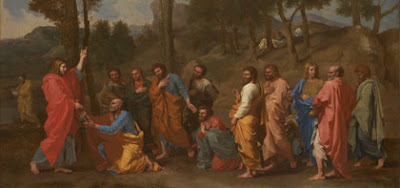 As the
National Catholic Register
published a great tribute to the achievements of Pope Emeritus Benedict, the Personal Ordinariate for former Anglicans received its due attention:
As the
National Catholic Register
published a great tribute to the achievements of Pope Emeritus Benedict, the Personal Ordinariate for former Anglicans received its due attention:In 2011, the Ordinariate of Our Lady of Walsingham was founded in England and Wales for the reception of Anglicans into full communion with the Catholic Church, while maintaining their distinctive Anglican patrimony. A year ago, the Ordinariate of the Chair of St. Peter was established in the U.S., while the Ordinariate of Our Lady of the Southern Cross was established in Australia last June.
Having made the accommodation of former Anglicans with their patrimony his personal project by enacting his 2009 apostolic constitution Anglicanorum Coetibus, Pope Benedict’s actions in creating these foundations could prove to be a major lasting legacy of his pontificate. This is a fact particularly recognized by the ordinary of the U.S. ordinariate, Msgr. Jeffrey Steenson. In a Feb. 11 statement, he commented that "members of the ordinariate are in a particular way the spiritual children of His Holiness Pope Benedict XVI." Msgr. Steenson noted that ever since Pope Benedict’s time as prefect of the Congregation for the Doctrine of the Faith, "the reconciliation of Anglicans to the Catholic Church has been one of his principal tasks." Despite expressing sadness at the Pope’s abdication, Msgr. Steenson said there is also "a deeper joy, knowing that we are the fruit of his vision for Catholic unity." There has been some concern about the future of the Ordinariate because of some comments Pope Francis made when he was Archbishop in Argentina. The Anglican bishop of Argentina, Greg Venables, reported that Archbishop Bergoglio told him the Ordinariate was unneccesary, as The Telegraph story recounts: The Rt Rev Greg Venables, the Anglican Bishop of Argentina, said that Cardinal Jorge Bergoglio, had told him "very clearly" that he doubts about the Ordinariate and thought there was no need for Anglicans who want closer ties with their Catholic counterparts to leave their church. . . . He added: "He called me to have breakfast with him one morning and told me very clearly that the Ordinariate was quite unnecessary and that the Church needs us as Anglicans." The Ordinary of the Ordinariate of the Chair of St. Peter in the USA, Monsignor Jeffrey Stinson, responded: We have received a number of inquiries from those who are concerned about what our new Pope’s attitude may be toward the Ordinariates, occasioned by an anecdotal report from an Anglican bishop in Argentina. It is important to remember that our Ordinariates were created by an apostolic constitution, thereby giving them real permanence and stability. But it is even more important to remember what it means to be Catholic, to have the full assurance that faith brings. Christ the Good Shepherd entrusted the governance of the Church to St. Peter and his successors. To be in communion with Peter brings a confidence we never knew as Anglicans. Pope Francis understands the pilgrim character of our communities and will be a wise and caring pastor to us! I think this is just part of the strange competitive comparison and contrast between emeritus Pope Benedict XVI and Pope Francis going on in both the secular and to some extent Catholic media. The Ordinariate effort may have been a particular interest of Benedict, but Francis will certainly not interfere with its progress.
Published on March 19, 2013 22:30
March 17, 2013
The Hound of Heaven
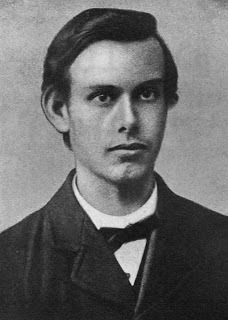 EWTN Radio broadcasts the old Family Theatre Classic Radio shows produced under the guidance of Father Patrick Peyton and last night as I drifted off to sleep I heard the "Hound of Heaven" featuring Mel Ferrer:
EWTN Radio broadcasts the old Family Theatre Classic Radio shows produced under the guidance of Father Patrick Peyton and last night as I drifted off to sleep I heard the "Hound of Heaven" featuring Mel Ferrer:Family Theater was one of the most successful shows on radio, running for 22 years over the Mutual Broadcasting System and featuring half hour dramatizations with religious themes sandwiched between Christian messages about God and prayer. Their shows seem dated today with blatantly zealous religious content and overblown music, but they were immensely popular during the 1940s and 50s and not only their radio plays but the accompanying messages featured major actors of the day.
Mel Ferrer starred in a very special play that was used several times during the show's two decades. The hero was a real person - Francis Thompson - one of England's most revered 19th century authors, whose greatest work was a poem entitled "The Hound of Heaven". In this dramatization based on his life, Francis Thompson is a lost soul, living on the streets of London, hopelessly addicted to opium and unable to secure a job. Two diverse people offer him assistance - a cobbler named Nick McMasters and a prostitute named Ann. Nick gives him a job along with food, a place to live and an undemanding friendship, but Francis wanders away from the cobbler when it becomes clear he'll never be able to learn the trade. Running from the footsteps that constantly haunt him, he collapses in front of Ann, whose gentle nursing brings Francis back to reality inspiring him to write again. But when he proposes to her she disappears from his life, knowing he has greatness in him that's beyond what she can offer. Instead of following up on his manuscript, Francis vainly searches for Ann and finally - alone and completely defeated - he realizes that the footsteps he's hearing are the hound of heaven representing his loss of faith and that only God can help him.
Francis Thompson is a marvelous role, and Mel Ferrer's reading is beautifully nuanced. He's greatly assisted by Ronald O'Connor's narrator, who represents the voice of God in a surprisingly prominent role. Jane Withers not only enacts Ann, but offered up the religious messages before and after the play, all of which were done in front of a live audience. The radio play was written by Frederick Lipp and the entire show was directed by Joseph F. Mansfield. "The Hound of Heaven": I fled Him, down the nights and down the days;I fled Him, down the arches of the years;I fled Him, down the labyrinthine waysOf my own mind; and in the midst of tearsI hid from Him, and under running laughter.Up vistaed hopes I sped;And shot, precipitated,Adown Titanic glooms of chasmed fears,From those strong Feet that followed, followed after.But with unhurrying chase,And unperturbèd pace,Deliberate speed, majestic instancy,They beat—and a Voice beatMore instant than the Feet—'All things betray thee, who betrayest Me'. Francis Thompson (16 December 1859 – 13 November 1907) was also aided by the Catholic convert and publisher Wilfred Meynell, according to the Catholic Encyclopedia : Having seen some numbers of a new Catholic magazine, "Merry England", he sent these poems to the editor, Mr. Wilfrid Meynell, in 1888, giving his address at a post-office. The manuscripts were pigeonholed for a short time, but when Mr. Meynell read them he lost no time in writing to the sender a welcoming letter which was returned from the post-office. The only way then to reach him was to publish the essay and the poem, so that the author might see them and disclose himself. He did see them, and wrote to the editor giving his address at a chemist's shop. Thither Mr. Meynell went, and was told that the poet owed a certain sum for opium, and was to be found hard by, selling matches. Having settled matters between the druggist and his client, Mr. Meynell wrote a pressing invitation to Thompson to call upon him. That day was the last of the poet's destitution. He was never again friendless or without food, clothing, shelter, or fire. The first step was to restore him to better health and to overcome the opium habit. A doctor's care, and some months at Storrington, Sussex, where he lived as a boarder at the Premonstratensian monastery, gave him a new hold upon life. It was there, entirely free temporarily from opium, that he began in earnest to write poetry. "Daisy" and the magnificent "Ode to the Setting Sun" were the first fruits. Mr. Meynell, finding him in better health but suffering from the loneliness of his life, brought him to London and established him near himself. Thenceforward with some changes to country air, he was either an inmate or a constant visitor until his death nineteen years later.
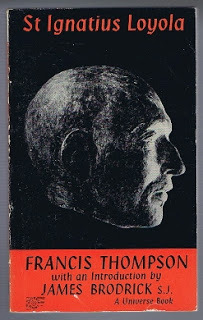 In the years from 1889 to 1896 Thompson wrote the poems contained in the three volumes, "Poems", "Sister Songs", and "New Poems". In "Sister Songs" he celebrated his affection for the two elder of the little daughters of his host and more than brother; "Love in Dian's Lap" was written in honour of Mrs. Meynell, and expressed the great attachment of his life; and in the same book "The Making of Viola" was composed for a younger child. At Mr. Meynell's house Thompson met Mr. Garvin and Coventry Patmore, who soon became his friends, and whose great poetic and spiritual influence was thenceforth pre-eminent in all his writings, and Mrs. Meynell introduced him at Box Hill to George Meredith. Besides these his friendships were few. In the last weeks of his life he received great kindness from Mr. Wilfrid Blunt, in Sussex. During all these years Mr. Meynell encouraged him to practise journalism and to write essays, chiefly as a remedy for occasional melancholy. The essay on Shelley, published twenty years later and immediately famous, was amongst the earliest of these writings; "The Life of St. Ignatius" and "Health and Holiness" were produced subsequently. I have a copy of the above edition of Thompson's St. Ignatius Loyola--it might be timely reading with the election of the first Jesuit as Pope!
In the years from 1889 to 1896 Thompson wrote the poems contained in the three volumes, "Poems", "Sister Songs", and "New Poems". In "Sister Songs" he celebrated his affection for the two elder of the little daughters of his host and more than brother; "Love in Dian's Lap" was written in honour of Mrs. Meynell, and expressed the great attachment of his life; and in the same book "The Making of Viola" was composed for a younger child. At Mr. Meynell's house Thompson met Mr. Garvin and Coventry Patmore, who soon became his friends, and whose great poetic and spiritual influence was thenceforth pre-eminent in all his writings, and Mrs. Meynell introduced him at Box Hill to George Meredith. Besides these his friendships were few. In the last weeks of his life he received great kindness from Mr. Wilfrid Blunt, in Sussex. During all these years Mr. Meynell encouraged him to practise journalism and to write essays, chiefly as a remedy for occasional melancholy. The essay on Shelley, published twenty years later and immediately famous, was amongst the earliest of these writings; "The Life of St. Ignatius" and "Health and Holiness" were produced subsequently. I have a copy of the above edition of Thompson's St. Ignatius Loyola--it might be timely reading with the election of the first Jesuit as Pope!
Published on March 17, 2013 23:00
March 16, 2013
Blessed John Henry Newman on Passion Sunday
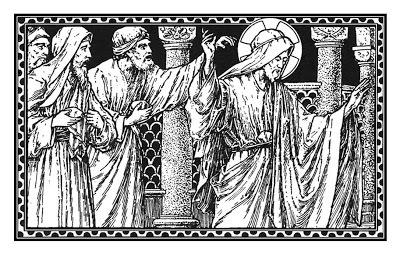 On the calendar of the Extraordinary Form of the Latin Liturgy of the Roman Rite, today is Passion Sunday. Blessed John Henry Newman compiled these notes for one of his sermons on this fifth Sunday in the season of Lent, meditating on Christ's priesthood. The readings for today's Mass are from the Letter to the Hebrews, chapter 9, verses 11-15 and from the Gospel of St. John, chapter 8, verses 46-59. Newman's notes:
On the calendar of the Extraordinary Form of the Latin Liturgy of the Roman Rite, today is Passion Sunday. Blessed John Henry Newman compiled these notes for one of his sermons on this fifth Sunday in the season of Lent, meditating on Christ's priesthood. The readings for today's Mass are from the Letter to the Hebrews, chapter 9, verses 11-15 and from the Gospel of St. John, chapter 8, verses 46-59. Newman's notes:1. INTROD.—Go through the gospel of the day, showing the strangeness of our Lord's doctrine, and the surprise and contempt of the Jews, in detail—modes of expression, ideas, objects, different.
2. So it was: it was a different system. If the world was true, He was not; if He, the world not.
3. They felt it obscurely and in detail, though He did not speak openly. How would they have felt if our Lord had said openly, 'I am the priest of the world'? What a great expression! But this is the truth, as forced on us by today's epistle. What the gospel says obscurely the epistle speaks out.
4. What is a priest? See how much it implies: first the need of reconciliation—it has at once to do with sin; it presupposes sin. When then our Lord is known to come as a priest, see how the whole face of the world is changed. Describe the world, how it goes on, buying and selling, etc.; then the light thrown on it that it is responsible to God, and has ill acquitted itself of that responsibility.
5. Again, it implies one the highest in rank. The head of the family was a priest—primogeniture. Hence Christ the Son of God.
6. Christ then, the Son of God, offers for the whole world, and that offering is Himself. He who is high as eternity, whose arms stretch through infinity, is lifted up on the cross for the sins of the world.
7. And He is a priest for ever. 'Thou art a priest for ever according to the order of Melchisedec.' The offering of the Mass. Say not it is an historical religion, done and over; it lasts.
8. And as, for ever, so all things with blood. Why? Grace of Christ, and Adam's grace before the fall. Men 'washed their robes in the blood of the Lamb'; 'the blood of Christ cleanseth,' 1 John i. 7
9. Now turn back and see how different from what we see—need of faith, so says our Lord in the gospel of the day.
10. And this awful addition, 'He that heareth the word of God is of God,' etc., John viii. 47
11. This a reason for these yearly commemorations, to bring on us the thought of the unseen world. Less obscure, perhaps, is Newman's Litany of the Passion, which is included in the Meditations and Devotions for private use: Jesus, the Eternal Wisdom, Have mercy on us.
The Word made flesh, Have mercy on us.
Hated by the world, Have mercy on us.
Sold for thirty pieces of silver, Have mercy on us.
Sweating blood in Thy agony, Have mercy on us.
Betrayed by Judas, Have mercy on us.
Forsaken by Thy disciples, Have mercy on us.
Struck upon the cheek, Have mercy on us.
Accused by false witnesses, Have mercy on us.
Spit upon in the face, Have mercy on us.
Denied by Peter, Have mercy on us.
Mocked by Herod, Have mercy on us.
Scourged by Pilate, Have mercy on us.
Rejected for Barabbas, Have mercy on us.
Loaded with the cross, Have mercy on us.
Crowned with thorns, Have mercy on us.
Stripped of Thy garments, Have mercy on us.
Nailed to the tree, Have mercy on us.
Reviled by the Jews, Have mercy on us.
Scoffed at by the malefactor, Have mercy on us.
Wounded in the side, Have mercy on us.
Shedding Thy last drop of blood, Have mercy on us.
Forsaken by Thy Father, Have mercy on us.
Dying for our sins, Have mercy on us.The statues in Catholic churches are veiled from this Sunday until Easter. As fisheaters.com notes, we do this because: "This veiling of the statues and icons stems from the Gospel reading of Passion Sunday (John 8:46-59), at the end of which the Jews take up stones to cast at Jesus, Who hides Himself away. The veiling also symbolizes the fact that Christ's Divinity was hidden at the time of His Passion and death, the very essence of Passiontide."
Published on March 16, 2013 22:30
March 15, 2013
Two More Martyrs in York: Richard Dalby and John Amias
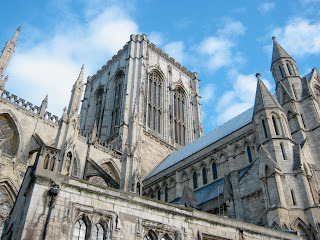 On March 16, 1589, these two priests suffered being hung, drawn and quartered in York.
On March 16, 1589, these two priests suffered being hung, drawn and quartered in York.Robert Dalby was from Hemingbrough in the East Riding of Yorkshire and lived at first as a Protestant minister. Becoming a Catholic, he entered the English College at Rheims on 30 September 1586 to study for the priesthood. He was ordained a priest at Châlons on 16 April 1588. It was on 25 August that year that he set out for England. He was arrested almost immediately upon landing at Scarborough on the Yorkshire coast and imprisoned in York Castle.
There is some doubt about the early life of Blessed John Amias. One story is that he was indeed John Amias or Amyas, born at Wakefield in Yorkshire, England, where he married and raised a family, exercising the trade of cloth-merchant. On the death of his wife, he divided his property among his children and left for the Continent to become a priest. There is also a possibility that he was really William Anne (surname), youngest son of John and Katherine Anne, of Frickley near Wakefield.
Regardless of his actual name, on 22 June 1580, a widower calling himself "John Amias" entered the English College at Rheims to study for the priesthood. He was ordained a priest in Rheim Cathedral on 25 March 1581. On 5 June of that year Amias set out for Paris and then England, as a missionary, in the company of another priest, Edmund Sykes. Of his missionary life we know little. Towards the end of 1588 he was seized at the house of a Mr. Murton at Melling in Lancashire and imprisoned in York Castle.
Yorkshire, as I've commented before on this blog and in Supremacy and Survival: How Catholics Endured the English Reformation, was one of those districts of England where recusancy and Catholicism was particularly strong. This History of York describes the Catholic Resistance during Elizabeth I's reign, providing some details of the trouble the queen had in asserting her authority. That's one of the reasons York is the first stop on the Catholic Martyrs of England tour this September. The shrine of St. Margaret Clitherow in The Shambles, York Castle and York Tyburn, where these two priests, yesterday's martyr Blessed William Hart, St. Henry Walpole, and many other Catholics suffered execution are on the itinerary. A visit to York Minster, St. Mary's Abbey's ruins and Mass at the Parish of the English Martyrs completes the itinerary.
Published on March 15, 2013 22:30
March 11, 2013
The Jacobite Pretender and the Venetian Conclave of 1799-1800
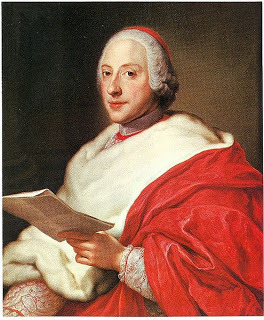 Yesterday, March 11 (NS) was the birthday of the last direct-line Stuart Pretender, Henry Benedict Stuart. Since the Papal Conclave of 2013 began today, however, and Henry Cardinal Stuart was among the Cardinal electors in Venice during the extraordinary Conclave of 1799-1800, I thought I would highlight his career again today.
Yesterday, March 11 (NS) was the birthday of the last direct-line Stuart Pretender, Henry Benedict Stuart. Since the Papal Conclave of 2013 began today, however, and Henry Cardinal Stuart was among the Cardinal electors in Venice during the extraordinary Conclave of 1799-1800, I thought I would highlight his career again today. Henry Benedict Stuart was the second son of the Old Pretender, James Francis Edward Stuart, who was recognized by his supporters as James III and VIII, King of England, Ireland and Scotland, and James III's wife Princess Maria Klementyna Sobieska. Henry was born on March 11, 1725 at the Palazzo Muti in Rome and baptized by Pope Benedict XIII the same day. Henry supported his brother Charles Edward Stuart, aka the Young Pretender, aka "Bonnie Prince Charlie" during this attempt to recover the throne of England, Ireland and Scotland from George I in 1745, but afterwards became a priest, bishop, and cardinal in the Church.
The French Revolution of 1789 hurt Cardinal Stuart financially, as did his support of Pope Pius VI, who was captured and deposed by Napoleon Bonaparte's forces in 1798 and died in Valence, France in 1799. Along with several other cardinals, Henry Stuart fled first to Naples and then to Venice, where the Conclave finally met and took quite some time to elect the next pope. According to this site, which gives many details of these events, "The Conclave had lasted three months and fourteen days, the vacancy six months and sixteen days."
The Conclave met in the Benedictine monastery of San Giorgio, located on the island of San Giorgio Maggiore--the monastery would be suppressed in 1806, and is now the headquarters of the Cini Foundation, which has restored it. Barnaba Niccolò Maria Luigi Chiaramonti, who had been a Benedictine monk (named Gregory) was finally elected on March 14, 1800 and crowned, wearing a papier mache tiara decorated with jewel stones donated by the other cardinals, in the monastery church. He took the name Pius, becoming the VIIth pope with that name.
In the meantime, Cardinal Stuart's financial difficulties were addressed with a 4,000 pound annuity from King George III and he eventually returned to his diocese in Frascati. He later became Dean of the College of Cardinals in 1803 and died in Frascati in 1807.
Published on March 11, 2013 23:00
Book Review: Jesus of Nazareth, Volume 2
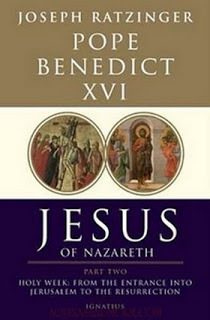 I finished reading Joseph Ratzinger/Pope Benedict XVI's Jesus of Nazareth: Part Two: Holy Week from the Entrance into Jerusalem to the Resurrection this weekend. I bought this book when it was published, but just now got around to reading it. I was impressed again by this most Augustinian of theologians using such an Scholastic method: elucidating our reading of the text of the Gospel telling of the story of Our Lord's Passion, Death, and Resurrection by reviewing the common historical-critical interpretations, and then going deeper into these mysteries of faith through faith.
I finished reading Joseph Ratzinger/Pope Benedict XVI's Jesus of Nazareth: Part Two: Holy Week from the Entrance into Jerusalem to the Resurrection this weekend. I bought this book when it was published, but just now got around to reading it. I was impressed again by this most Augustinian of theologians using such an Scholastic method: elucidating our reading of the text of the Gospel telling of the story of Our Lord's Passion, Death, and Resurrection by reviewing the common historical-critical interpretations, and then going deeper into these mysteries of faith through faith.Ignatius Press offers substantial excerpts from the book on this website, including the section that was the highpoint for me in the reading the book--Ratzinger's meditation on the themes of truth and power, justice and peace, truth and justice woven through the drama of Jesus's trial before Pontius Pilate. Jesus confronts Pilate with quite a challenge and test: to accept truth that claims a higher power and to conduct justice that results in more than peace and security (and Pilate fails both tests):
At this point we must pass from considerations about the person of Pilate to the trial itself. In John 18:34–35 it is clearly stated that, on the basis of the information in his possession, Pilate had nothing that would incriminate Jesus. Nothing had come to the knowledge of the Roman authority that could in any way have posed a risk to law and order. The charge came from Jesus' own people, from the Temple authority. It must have astonished Pilate that Jesus' own people presented themselves to him as defenders of Rome, when the information at his disposal did not suggest the need for any action on his part.
Yet during the interrogation we suddenly arrive at a dramatic moment: Jesus' confession. To Pilate's question: "So you are a king?" he answers: "You say that I am a king. For this I was born, and for this I have come into the world, to bear witness to the truth. Every one who is of the truth hears my voice" ( Jn 18:37). Previously Jesus had said: "My kingship is not of this world; if my kingship were of this world, my servants would fight, that I might not be handed over to the Jews; but my kingship is not from the world" (18:36).
This "confession" of Jesus places Pilate in an extraordinary situation: the accused claims kingship and a kingdom (basileía). Yet he underlines the complete otherness of his kingship, and he even makes the particular point that must have been decisive for the Roman judge: No one is fighting for this kingship. If power, indeed military power, is characteristic of kingship and kingdoms, there is no sign of it in Jesus' case. And neither is there any threat to Roman order. This kingdom is powerless. It has "no legions".
With these words Jesus created a thoroughly new concept of kingship and kingdom, and he held it up to Pilate, the representative of classical worldly power. What is Pilate to make of it, and what are we to make of it, this concept of kingdom and kingship? Is it unreal, is it sheer fantasy that can be safely ignored? Or does it somehow affect us?
In addition to the clear delimitation of his concept of kingdom (no fighting, earthly powerlessness), Jesus had introduced a positive idea, in order to explain the nature and particular character of the power of this kingship: namely, truth. Pilate brought another idea into play as the dialogue proceeded, one that came from his own world and was normally connected with "kingdom": namely, power — authority (exousía). Dominion demands power; it even defines it. Jesus, however, defines as the essence of his kingship witness to the truth. Is truth a political category? Or has Jesus' "kingdom" nothing to do with politics? To which order does it belong? If Jesus bases his concept of kingship and kingdom on truth as the fundamental category, then it is entirely understandable that the pragmatic Pilate asks him: "What is truth?" (18:38).
It is the question that is also asked by modern political theory: Can politics accept truth as a structural category? Or must truth, as something unattainable, be relegated to the subjective sphere, its place taken by an attempt to build peace and justice using whatever instruments are available to power? By relying on truth, does not politics, in view of the impossibility of attaining consensus on truth, make itself a tool of particular traditions that in reality are merely forms of holding on to power?
And yet, on the other hand, what happens when truth counts for nothing? What kind of justice is then possible? Must there not be common criteria that guarantee real justice for all — criteria that are independent of the arbitrariness of changing opinions and powerful lobbies? Is it not true that the great dictatorships were fed by the power of the ideological lie and that only truth was capable of bringing freedom?
Read the rest of this excerpt here. While I found the book very interesting and often surprising--I had never heard before about the theory of a break between Jesus's Preaching of the Kingdom of God in Galilee and his Passion and Death in Jerusalem as though Jesus decided the first effort had failed and dropped back to "Plan B"--but I did not find it a very devotional read. The Pope Emeritus offers much for meditation, but the text is almost academic. Not that that's a bad thing! I don't mean that the book reads like a textbook, but that Joseph Ratzinger shows great erudition, constant study, and currency with the requisite bibliography. He is teaching, not necessarily preaching and he moves between the levels of instruction and exhortation very effectively. Of course I recommend it.
Table of Contents
Abbreviations
Publisher's Note
Foreword
Chapter 1: The Entrance into Jerusalem and the Cleansing of the Temple
1. The Entrance into Jerusalem
2. The Cleansing of the Temple
Chapter 2: Jesus' Eschatological Discourse
1. The End of the Temple
2. The Times of the Gentiles
3. Prophecy and Apocalyptic in the Eschatological Discourse
Chapter 3: The Washing of the Feet
The hour of Jesus
"You are clean"
Sacramentum and exemplum — gift and task: The "new commandment"
The mystery of the betrayer
Two conversations with Peter
Washing of feet and confession of sin
Chapter 4: Jesus' High-Priestly Prayer
1. The Jewish Feast of Atonement as Biblical Background to the High-Priestly Prayer
2. Four Major Themes of the Prayer
"This is eternal life . . ."
"Sanctify them in the truth . . ."
"I have made your name known to them . . ."
"That they may all be one . . ."
Chapter 5: The Last Supper
1. The Dating of the Last Supper
2. The Institution of the Eucharist
3. The Theology of the Words of Institution
4. From the Last Supper to the Sunday Morning Eucharist
Chapter 6: Gethsemane
1. On the Way to the Mount of Olives
2. The Prayer of Jesus
3. Jesus' Will and the Will of the Father
4. Jesus' Prayer on the Mount of Olives in the Letter to the Hebrews
Chapter 7: The Trial of Jesus
1. Preliminary Discussion in the Sanhedrin
2. Jesus before the Sanhedrin
3. Jesus before Pilate
Chapter 8: Crucifixion and Burial of Jesus
1. Preliminary Reflection: Word and Event in the Passion Narrative
2. Jesus on the Cross
a. The first of Jesus' words from the Cross: "Father, forgive them"
b. Jesus is mocked
c. Jesus' cry of abandonment
d. The casting of lots for Jesus' garments
e. "I thirst"
f. The women at the foot of the Cross — the Mother of Jesus
g. Jesus dies on the Cross
h. Jesus' burial
3. Jesus' Death as Reconciliation (Atonement) and Salvation
Chapter 9: Jesus' Resurrection from the Dead
1. What Is the Resurrection of Jesus?
2. The Two Different Types of Resurrection Testimony
a. The Confessional Tradition
1. Jesus' death
2. The question of the empty tomb
3. The third day
4. The witnesses
b. The Narrative Tradition
1. Jesus' appearances to Paul
2. The appearances of Jesus in the Gospels
3. Summary: The Nature of Jesus' Resurrection and Its Historical Significance
Epilogue: He Ascended into Heaven — He Is Seated at the Right Hand of the Father, and He Will Come Again in Glory
Bibliography
Glossary
Index of Biblical References
Index of Proper Names and Subjects
Published on March 11, 2013 22:30
March 10, 2013
Herbert, Vaughn Williams, and Allen
This morning at Mass for Laetare Sunday, at the Offertory the choir sang an arrangement of Ralph Vaughn Williams' The Call (George Herbert's poem) for choir, organ and flute. Above, a youtube video of Thomas Allen singing The Call at a Proms performance in 2004.(Starts at 5:38, after "Love Bade Me Welcome"; both are from the Five Mystical Songs (1906-1911)--then the choir sings the rousing Antiphon!)
Come, my Way, my Truth, my Life:
Such a Way, as gives us breath:
Such a Truth, as ends all strife:
Such a Life, as killeth death.
Come, my Light, my Feast, my Strength:
Such a Light, as shows a feast:
Such a Feast, as mends in length:
Such a Strength, as makes his guest.
Come, my Joy, my Love, my Heart:
Such a Joy, as none can move:
Such a Love, as none can part:
Such a Heart, as joyes in love.
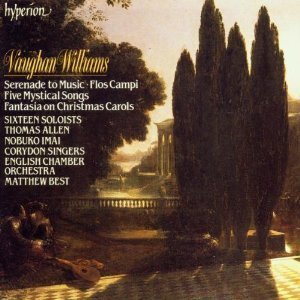
I have Allen's recording of the Five Mystical Songs with the Serenade to Music , Flo Campi, and the Fantasia on Christmas Carols--it is one of my favorite CDs!
Come, my Way, my Truth, my Life:
Such a Way, as gives us breath:
Such a Truth, as ends all strife:
Such a Life, as killeth death.
Come, my Light, my Feast, my Strength:
Such a Light, as shows a feast:
Such a Feast, as mends in length:
Such a Strength, as makes his guest.
Come, my Joy, my Love, my Heart:
Such a Joy, as none can move:
Such a Love, as none can part:
Such a Heart, as joyes in love.

I have Allen's recording of the Five Mystical Songs with the Serenade to Music , Flo Campi, and the Fantasia on Christmas Carols--it is one of my favorite CDs!
Published on March 10, 2013 11:35
March 9, 2013
St. John Ogilvie, SJ
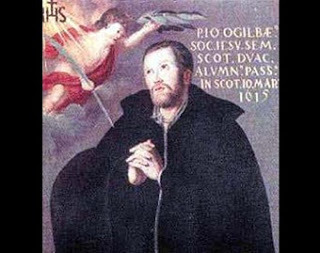 On this Sunday, the Third Sunday of Lent and the beginning of Daylight Savings time here in the USA, it's very appropriate to consider the story of St. John Ogilvie, who endured the torture of sleep deprivation while being questioned by Scottish authorities. He was martyred on March 10, 1615.
On this Sunday, the Third Sunday of Lent and the beginning of Daylight Savings time here in the USA, it's very appropriate to consider the story of St. John Ogilvie, who endured the torture of sleep deprivation while being questioned by Scottish authorities. He was martyred on March 10, 1615.As the CNA website recounts his story:
March 10 is the liturgical memorial of Saint John Ogilvie, a 16th-and 17th-century Scotsman who converted from Presbyterianism to Catholicism, served as a Jesuit priest, and died as a martyr at the hands of state officials. St. John was executed for treason, refusing to accept King James I’s claim of supremacy over the Church. Pope Paul VI canonized him in 1976, making him Scotland’s first canonized saint for several hundred years.
In February 2010, during a visit to Rome by the Scottish bishops’conference, Benedict XVI asked the bishops to promote devotion to St. John Ogilvie among priests – since the Jesuit martyr had been “truly outstanding in his dedication to a difficult and dangerous pastoral ministry, to the point of laying down his life.” Later that year, during the Scottish segment of his U.K. visit, the Pope again encouraged priests to look to the saint’s “dedicated, selfless and brave” example. [Blessed John Paul II also mentioned St. John Ogilvie during his visit to Scotland in 1982.]
John Ogilvie was born in 1579, a member of a noble family. Some of his relatives had kept the Catholic faith, while others adhered to John Calvin’s interpretation of Protestantism as Presbyterians. Though raised as a Calvinist, John had doubts about the compatibility of this system with Scripture. In particular, he could not reconcile Calvin’s theology of predestination with Biblical passages teaching that God loves all people and wills each of them to be saved.
This difficulty, coupled with the contrast between Catholic unity and the multiple Protestant sects and denominations, influenced John’s decision to enter the Catholic Church. He made the decision at age 17 while studying in Belgium, and in 1599 he became a novice in the Society of Jesus. After extensive study and training he was ordained a Jesuit priest in Paris during 1610.
John greatly desired to go back to his native country and encourage its return to the Catholic Church. He served for a time as a priest in France, while requesting to be sent back to Scotland. Others within his order made it clear to him that such a mission would be dangerous and unlikely to produce much fruit. In 1613, however, John obtained the assignment he desired.
He soon discovered the truth of the warnings he had received from other Jesuits, about the difficulty of Catholic evangelization in Scotland. Many members of the upper classes were not interested in returning to the Church, though he did carry out pastoral work among a largely poor population of Scots who had kept the faith. After a period in England he returned to France, seeking directions on how to proceed in light of his lack of success.
The French Jesuits ordered John back to Scotland, however, where he resumed his ministry to the underground Church as well as the smaller number of people interested in converting. His arrest came about when one potential “convert” turned out to be an informer, who had John arrested and interrogated.
The first criminal accusation St. John Ogilvie faced was that of celebrating Mass within the King’s realm. Unwilling to incriminate himself, he suffered two months of imprisonment. An iron bar was attached to his feet to prevent him from moving in his cell. Despite this ordeal, he strongly resisted pressure to give evidence against other Scottish Catholics.
Severe torture was then inflicted on John. His hair and fingernails were pulled out, and for a period of nine days he was prevented from sleeping by continual stabbing with sharp stakes. His jailers beat him, flung him to the floor of his cell, and shouted in his ears. Nothing, however, could make him renounce his faith or betray his Catholic countrymen to the authorities.
John’s tormentors were impressed by his fortitude, and by the surprising sense of humor that he showed in the face of the brutal punishments. But they could not spare his life, unless the Jesuit priest gave an acceptable response to a series of questions provided by King James I. Johndeclared his loyalty to the king, but steadfastly rejected James’claim to supremacy over the Church in religious matters. The priest was eventually convicted on a charge of high treason.
Attempts to ply John with bribery – in exchange for his return to Protestantism, and his betrayal of fellow Catholics – continued even as he was being led to his execution. His own defiant words are recorded: for the Catholic faith, he said, he would "willingly and joyfully pour forth even a hundred lives. Snatch away that one which I have from me, and make no delay about it, but my religion you will never snatch away from me!"
Asked whether he was afraid to die, the priest replied: “I fear death as much as you do your dinner.” St. John Ogilvie was executed by hanging on March 10, 1615.
As a last gesture before his hanging, St. John had tossed his Rosary beads into the crowd where they were caught by a Calvinist nobleman. The man, Baron John ab Eckersdorff, later became a Catholic, tracing his conversion to the incident and the martyr’s beads.
John Ogilvie was canonized in 1976, becoming the first Scottish saint since 1250 (St. Margaret of Scotland). Pope Paul VI's homily during the Mass for his canonization is available on the Vatican website--most of it is in Italian, but it begins and ends with English:
We have great joy in being able to announce to all of God’s pilgrim Church on earth the glorious name of a new Saint, that of John Ogilvie, who died a martyr in Glasgow, on 10 March 1615, and who has already been accorded the honour of beatification by our venerable predecessor Pope Pius XI, on 22 December 1929. . . .
The conclusion of this very simple talk of ours cannot be without a word of ardent satisfaction for you, sons and daughters of Scotland, who have come to this solemn and culminating canonization of the new Saint-the Saint whom you, above all others, have the right to call your own.
We are happy to recognize in this sympathetic and heroic figure of a man, a saint and a martyr the symbol of your own religious, strong and generous land. And in Saint John Ogilvie we willingly greet a glorious champion of your people, an ideal exemplar of your past history, a magnificent inspiration for your happy future. We honour in Saint John Ogilvie an outstanding member of that Society of Jesus which has given so many other valiant soldiers like him to the cause of Christ and of civilization. In him we jubilantly greet a beloved son of the Catholic Church, a typical citizen of the world who is called to discover the light for its harmony, progress and peace in the faith of Christ.
Honour to you, representatives of a Scotland that has given to humanity such a great hero of freedom and of faith.
Published on March 09, 2013 22:30



